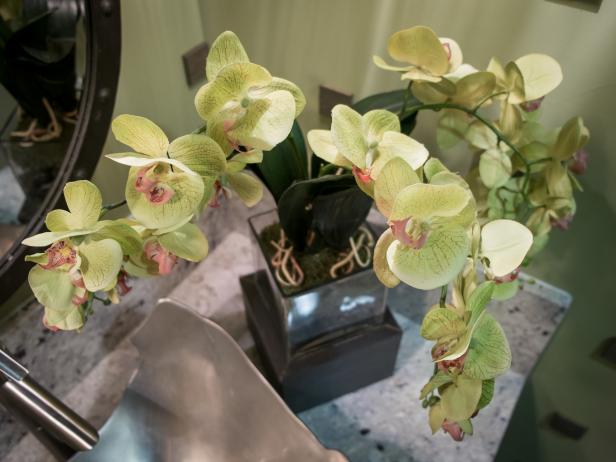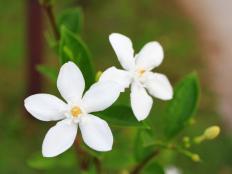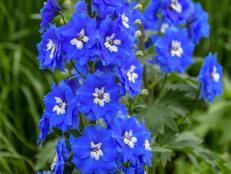8 Ways to Kill Your Orchid


Daniel Pratt, 2013, Scripps Networks, LLC. All Rights Reserved
It’s just not fair: Orchids have this bum rap for being some of the most finicky plants to grow. And don’t even talk about getting a second bloom out of them. Most frustrated indoor gardeners just toss them once that last flower’s gone.
Yet, the truth is orchids are some of the easiest plants to grow if given the proper exposure, potting mix and right amount of water. Just ask Becky Brinkman, longtime manager of the Atlanta Botanical Garden’s Fuqua Orchid Center, home to one of the country’s largest collections of species orchids. There, envious visitors corner her every day for advice on what they’re doing wrong with their own plants. So much so, that Becky has come up with her Eight Ways to Kill Your Orchid:
1. Water it every day.
The most frequently asked question is “Do you water the orchids every day?” The answer is, “No, but we check them every day.” Checking means looking at the potting mix to see if it’s dry. A good grower learns to recognize the change in color that accompanies the drying process.
2. Establish a watering schedule for your orchid. Make it conform to your schedule. Water it on the same day of the week that you go to the gym, or the grocery store, or the car wash.
This one is really tempting. But let’s say it’s September. Did you notice that yesterday was one and a half minutes shorter than the day before and that the sun is now lower in the sky than it was in July? Your plant did. So, two months from now, when your orchid receives one less hour of light and considerably weaker light intensity, does it make sense to water with the same frequency?
3. Water your orchid whenever you water your other plants.
Convenient, yes. Good horticulture, no.
4. Water your Phalaenopsis orchid with ice cubes.
Tell me you don’t do this. In nature, a moth orchid seldom experiences temperatures below 60 degrees. And you’re thinking about applying ice water to its roots? Why not just put it in the freezer for a day?
5. Find out where your orchid is native to and water it when the Weather Channel says it’s raining there.
This strategy wouldn’t work even if you and your houseplant lived in its country of origin. Microclimate matters more to an orchid than macroclimate. Even if your condo is located in the rainforest, the kitchen window microclimate where your potted orchid resides is different from the microclimate within the tree canopy outside.
6. Force it to live its entire life in a beautiful pot with no drainage holes, in a dense soil mix, and smothered with florist’s moss.
I know you received it from the florist this way, and it looks great, I admit it. But shouldn’t they know better? The florist’s priority is how the plant looks, not how well it grows.
7. Force it to live its entire life in the same soil mix that the grower put it in.
After two years an orchid mix is history. Orchids in conventional peat moss-based houseplant soil should be sold with “Buyer Beware” stamped on the pot. The structure of peat moss (and composted pine bark) is too fine and too dense to be a good long-term medium for plants that in nature grow in trees. It retains loads of water and breaks down quickly. Peat-based mixes are cheap, widely available, uniform, sterile and lightweight (meaning inexpensive to ship). Young orchids reach flowering size rapidly in this mix, saving production time and labor, and then can be swiftly passed along to the consumer.

8. Bring your orchid to the Garden’s Orchid Care Clinic on the coldest day in January. On the way home leave it in your unheated car while your visit every store in the mall.
Oh no. More blood on my hands.
Becky’s bottom-line basic advice is this:
- Plant your orchid in a coarse-textured potting mix that promotes air circulation, such as the combination of bark/charcoal/perlite.
- Give it intense sunlight (an east-facing windowsill is good).
- Let the plant dry out a little between waterings.
- Don’t overdo it with the fertilizer (cut the dosage by half for these light feeders).













































